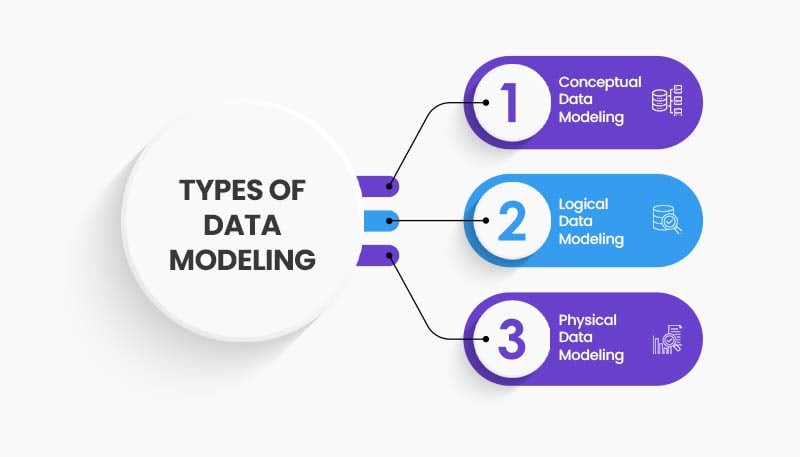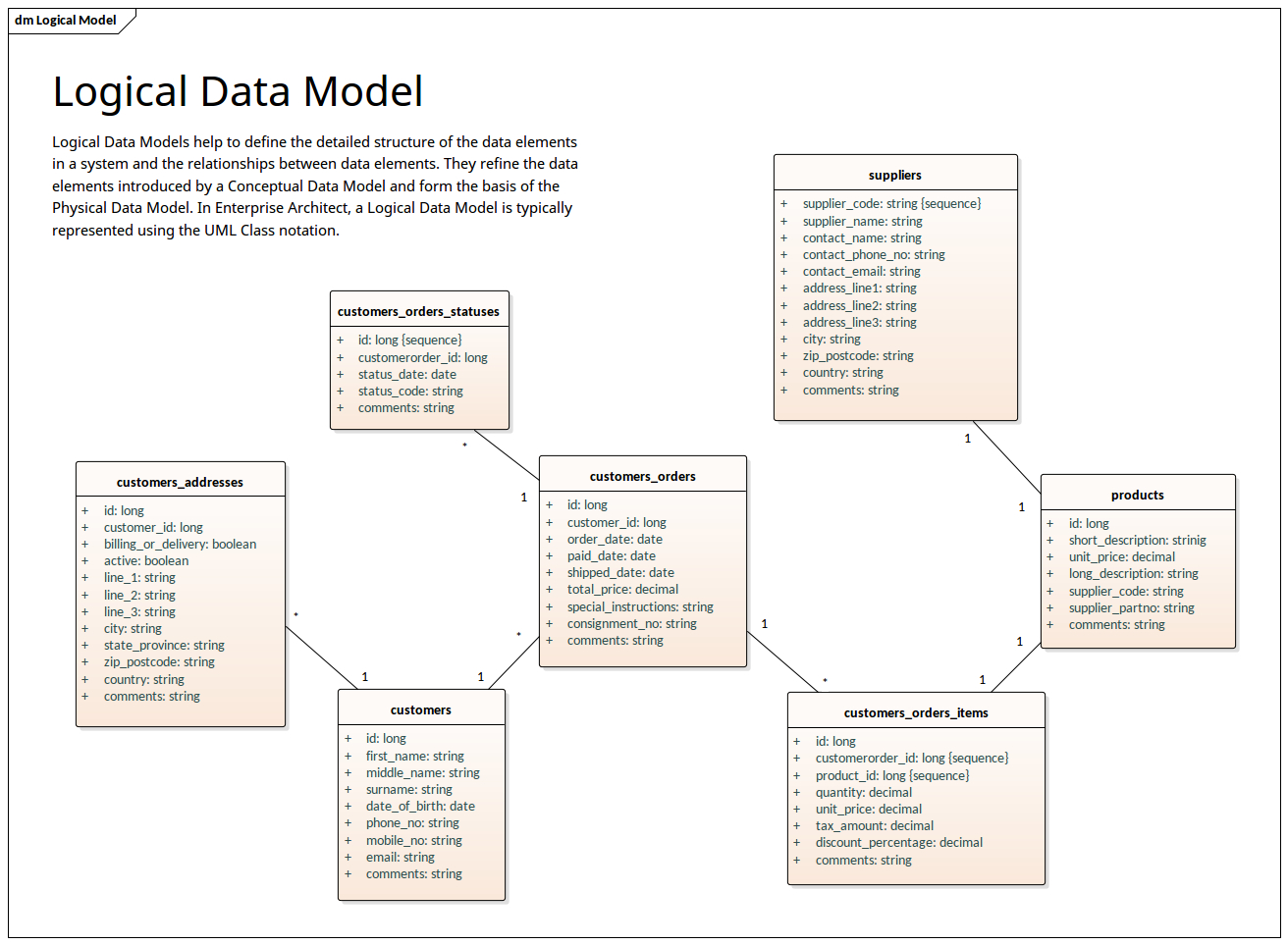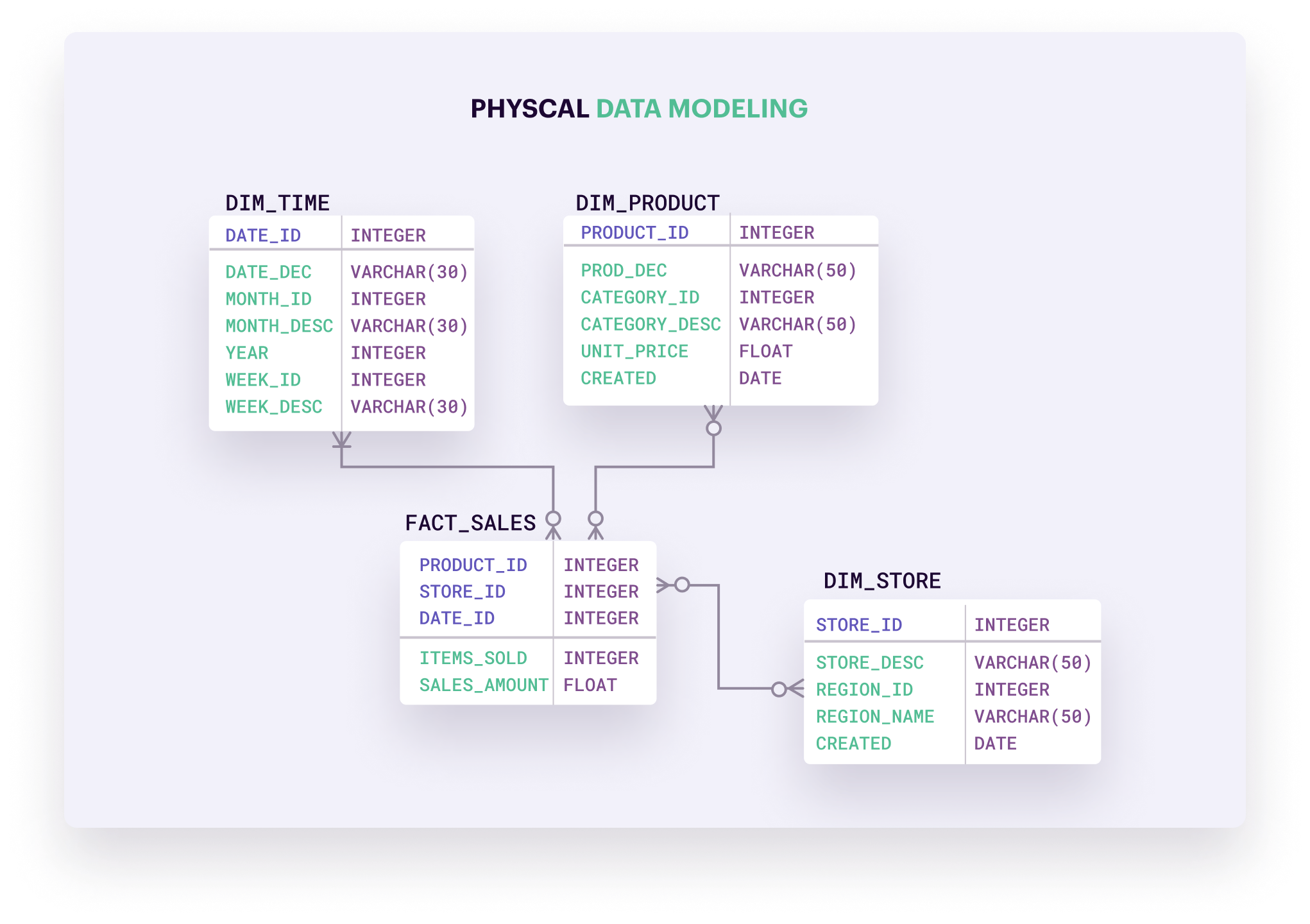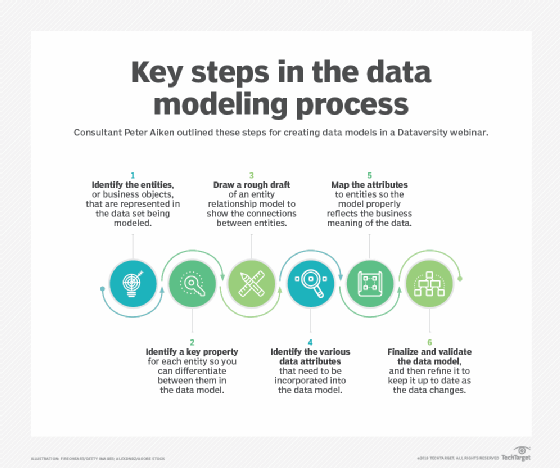What is Data Modeling
Imagine you're putting together a huge puzzle. Each piece represents a bit of information.
Data modeling is just like that, but instead of a picture, it is lots of data so computers and people can understand it better. It's like drawing a map that shows where all the pieces of information live and how they connect.
Types of Data Models
The different types of data models are the following:

Conceptual Data Model
A conceptual data model is like drawing a big picture of your data without worrying about the details. It's all about capturing the essential ideas and relationships between different types of information. Imagine you're sketching a map of your neighborhood, highlighting the main streets and landmarks without getting into the specifics of each building.

Logical Data Model
Moving a step closer to the nitty-gritty details, a logical data model defines how data elements are structured and organized. It's like creating a detailed blueprint for a house, specifying the rooms, doors, and windows based on the neighborhood map you sketched.

Physical Data Model
Imagine you're working with architects and builders to turn your house blueprint into a real structure. In the same way, a physical data model defines the database tables, columns, indexes, and constraints needed to translate the logical data model into a functioning database schema.

Processes Involved in Data Modeling
Here are the following processes involved in data modeling:

Requirements Gathering
Before diving into data modeling, you need to gather all the important details about what the data represents and how it's going to be used. This is called requirements gathering. It's like collecting ingredients before you start cooking. You want to make sure you have everything you need to create a delicious dish—or in this case, a well-structured database.
Conceptualization
Once you have a clear picture of the data requirements, it's time to put your thinking cap on and start conceptualizing. This is where you create a high-level overview of the data model, focusing on the main entities and their relationships.
Normalization
Now, let's talk about normalization. This step is all about making sure your data is organized efficiently and without redundancy. It's like tidying up your room—putting things in their proper place so you can find them easily when you need them.
Implementation
Finally, it's time to roll up your sleeves and get into implementation. This is where you turn your conceptual data model into a real database schema that can be used by software applications.
Benefits of Data Modeling
Data modeling offers several important benefits that contribute to effective database design and management. Let's explore how data modeling can make a difference in organizing and leveraging data:
Improved Data Organization
By creating a clear conceptual data model, organizations can better understand the structure and relationships of their data. This leads to improved data organization, ensuring that information is stored logically and efficiently.
Enhanced Data Consistency
Consistency is key in data management. A well-designed logical data model promotes data consistency by defining standard data elements and relationships.
Facilitated Decision-Making
With a solid data model in place, organizations can make informed decisions based on reliable data. For example, a physical data model optimized for performance allows for faster query processing, enabling real-time decision-making.
Best Practices for Effective Data Modeling
To maximize the benefits of data modeling, it's important to follow best practices that ensure consistency, clarity, and usability of the data models.
Maintain Consistency
Consistency is key to effective data modeling. Use standardized naming conventions and data definitions across the models to avoid confusion.
Use Standard Notation
Standard notation enhances communication and collaboration among stakeholders, facilitating a common understanding of complex data structures.
Document Thoroughly
Documentation is essential for maintaining and evolving data models over time. Document the rationale behind design decisions, assumptions, and dependencies within the data model.
Challenges in Data Modeling
Now it's time to check the challenges in data modeling.
Complexity
One of the primary challenges in data modeling is dealing with complexity. As data volumes and relationships grow, models can become intricate and difficult to manage.
Changing Requirements
Another challenge in data modeling is changing requirements. Business needs evolve over time, leading to updates and modifications in data structures.
Data Integrity
Maintaining data integrity is crucial but can be challenging in complex data environments. Data integrity ensures that information is accurate, consistent, and reliable throughout its lifecycle.
Frequently Asked Questions(FAQs)
What is data modeling in simple terms?
Data modeling organizes data in a way that makes it easy to store, retrieve, and use.
Why is data modeling important?
It helps in managing data efficiently, improving data quality, and supporting business decisions by making data understandable.
What are the types of data models?
Three main types: Conceptual, Logical, and Physical Data Models, each serving a different purpose in data organization.
How does data modeling affect database performance?
Well-designed models streamline data flow, reduce redundancy, and enhance retrieval speed, significantly boosting database performance.
When should data modeling be done in the development process?
Early in the process, to outline data structures and relationships, guiding the entire development with a clear structure.
Can data modeling help with data security?
Yes, by identifying sensitive data elements and defining access controls and encryption requirements early in the design process
